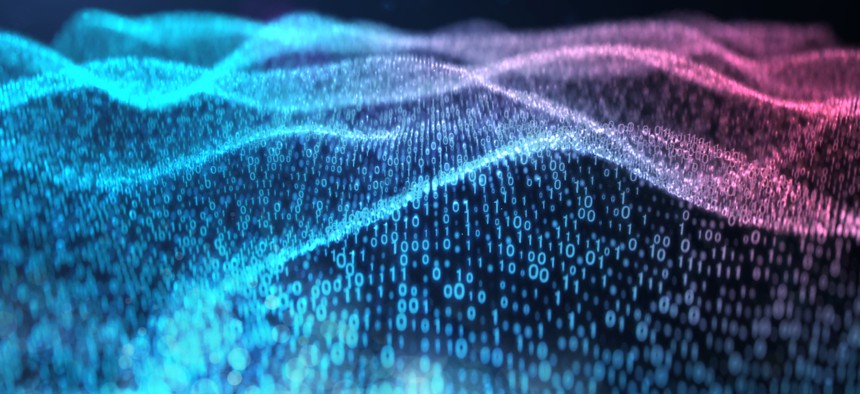
Getty Images / Yuichiro Chino
Swamped with cybersecurity data, NGA hopes ChatGPT-like tools can help
The mapping agency is trying to keep tabs on 70,000 events per second.
Every second, some 70,000 new data points flow into the National Geospatial-Intelligence Agency’s cybersecurity center. Agency officials hope new generative-AI tools can help cyber defenders keep better tabs on it all.
“The amount of data that we are bringing in from a cyber perspective is absolutely astounding,” said Gary Buchanan, NGA’s chief information officer. “And there isn't a workforce large enough to sift through that level of data every day, which is why we really need artificial intelligence and machine learning for our future.”
A typical day delivers 10 to 20 terabytes of data to the agency’s Cybersecurity Operations Center, Buchanan said during an Intelligence and National Security Alliance event on Thursday.
“That's an astronomical volume of data, he said. “Most people are familiar with like a gigabyte of data. A thousand gigabytes makes a terabyte.”
To put it in perspective, one terabyte equals 250,000 photos or 500 hours of high-quality video, he said. Now, multiply that by ten.
And those numbers are only going to increase as the Pentagon accelerates its digital modernization efforts. The agency’s cyber center could soon process petabytes worth of data, Buchanan said.
“We're going to reach the petabyte range, which is roughly 20 million large filing cabinets with a million of them, where the data is a petabyte. It's also equivalent to 500 billion pages of printed text. And there isn't a workforce large enough to sift through that level of data every day, which is why we really need artificial intelligence and machine learning for our future,” he said.
In addition to the sheer volume of information, NGA’s cyber center processes information from 126 data sources and four separate networks. Those data sources come with 745 custom fields and the center has to process 70,000 events per second.
The agency is working to improve its data analytics for more accurate reporting, developing new standards, and uncovering potential trends and gaps, he said.
The Pentagon is already exploring uses for generative AI tools, which output text, images, and even audio in response to user prompts, to filter and analyze satellite imagery. Now the agency is working with national laboratories to develop a cyber-focused capability. Buchanan said it’s not ready to be deployed yet, but it’s “maturing.”
“I'd love to say it's here right now. It's probably two or three years off, for us [internally], but we've been looking at it for the last two years, partnering with national labs to do so,” he said.
Buchanan’s comments come after the Pentagon announced a new generative AI task force to evaluate, “synchronize, and employ generative artificial intelligence (AI) across the Department.”
Earlier this year, Lt. Gen. Scott Berrier, the Defense Intelligence Agency’s director, touted the technology’s potential to improve pattern analysis.
“It can do a lot of good; it can make our job easier with a lot of information put in. But it can’t determine intent,” he said. “Now, it can get you on the road to what you think might be intent, but this is where critical-thinking analysts really come in.”
NEXT STORY: NSA to stand up AI security center


